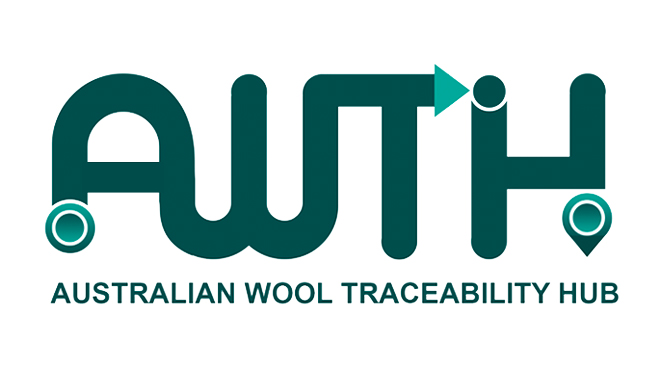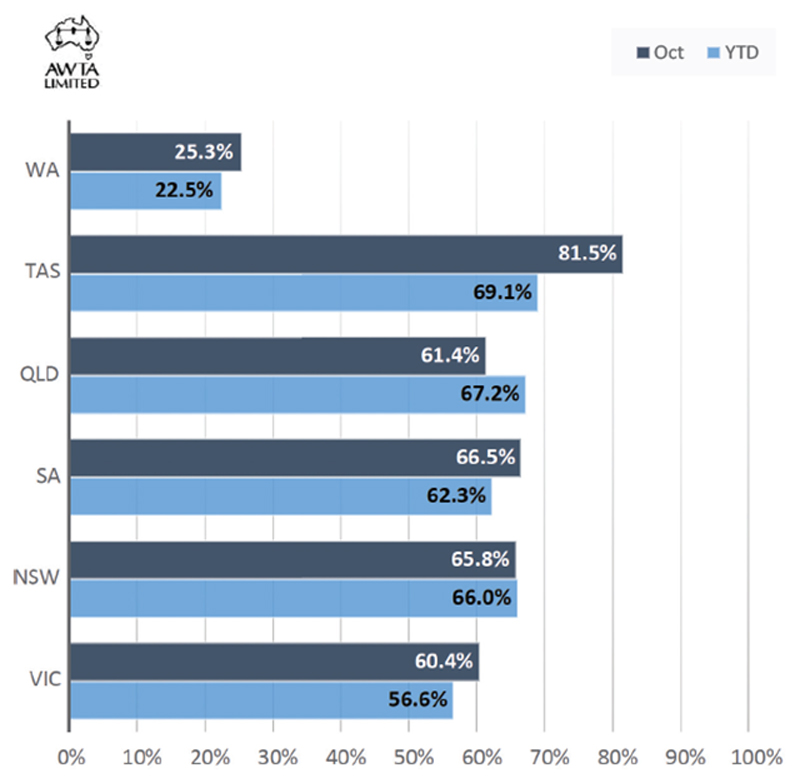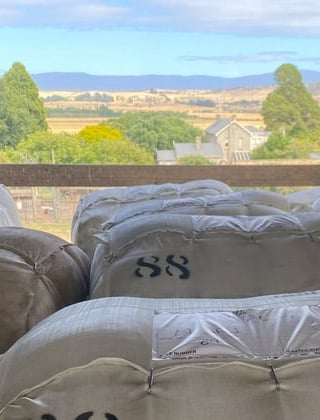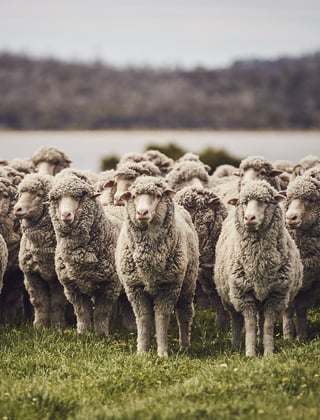Uptake in Australian Wool Traceability Hub

Adoption of the Australian Wool Traceability Hub continues to increase, with more than 40% of wool brokers signing up to the secure platform designed to enhance the traceability of Australian wool from farm to first stage processor.
The Australian Wool Traceability Hub (AWTH) is gaining significant traction, with recent information sessions in Melbourne and Sydney helping to drive engagement with the industry’s wool brokers. As at 1 November 2024, more than 40% of wool brokers have subscribed to the platform.
An industry-owned and -led initiative, the AWTH is an essential tool for the Australian wool industry to get ahead of the curve when it comes to Australian wool’s Emergency Animal Disease (EAD) response plan. The AWTH also provides a digital platform to track the journey of wool from farm to first stage processor, ensuring a chain of custody and provenance. The AWTH was officially launched in July and is available to woolgrowers as well as wool sellers and buyers.
The AWTH represents a significant industry collaboration, bringing together industry bodies including the Australian Council of Wool Exporters and Processors (ACWEP), Australian Wool Exchange (AWEX), Australian Wool Handlers (AWH), Australian Wool Innovation (AWI), Australian Wool Testing Authority (AWTA), National Council of Wool Brokers of Australia (NCWBA) and WoolProducers Australia (WPA).
“Through the AWTH, we are reinforcing the industry's dedication to transparency and responsible practices,” said AWI CEO, John Roberts. “The Hub will serve as a testament to our collective efforts to maintain the integrity, trust and value that Australian wool is known for worldwide.”
The nation’s wool testing authority AWTA manages and operates the AWTH on behalf of the industry, overseen by Wool Industries Australia Inc.
Property Identification Code
The woolgrower’s Property Identification Code (PIC) is an essential requirement of the AWTH. A PIC is an eight-character alphanumeric code allocated by state/territory authorities to livestock producing properties. If you own sheep, you require a PIC.
Ensuring accurate PIC declarations is crucial for mapping bales back to properties. It improves the industry's ability to respond rapidly and effectively should an EAD outbreak happen. Accurate PIC data allows authorities to trace the origins of potential disease threats swiftly, helping to protect the health of livestock and maintain biosecurity. Importantly, it would help re-establish trade in the shortest possible timeframe.
PIC declarations continue to improve. Nationally, PIC declarations have increased by 14.1 percentage points during the past year, up from 41.5% during October 2023 to 55.66% during October 2024. However, this figure is still much lower than what is required to adequately deal with an EAD event.
All woolgrowers are strongly encouraged to make sure they include their PIC on their Wool Classer's Specification and National Wool Declaration. Moving forward, the goal is to achieve a 100% adoption rate which would enable a rapid response to help minimise the inevitable trade disruptions that would follow in the event of an EAD incursion. You can update your contact details or apply for a PIC by contacting your state authority or Department of Agriculture.
Tasmania currently leads the way with 81.5% PIC declarations achieved in October 2024, setting a benchmark for others to follow (see Figure 1 below).
Figure 1: Percentage of bales with a PIC in October 2024 and year to date

Farm data privacy
In a major development, the AWTH will soon achieve independent certification under the National Farmers' Federation (NFF) Farm Data Code, reflecting the AWTH’s commitment to responsible data management and security.
This certification provides reassurance to both woolgrowers and brokers regarding the safe and ethical use of their data. Visit www.nff.org.au/australian-farm-data-code for more information about the NFF Farm Data Code.
Access to your clip test information
A further benefit of the platform is that woolgrowers can access all their wool test information in one convenient location, while also gaining valuable insights into the journey of their wool through the supply chain.
A key step to utilising AWTH’s capacity to showcase clip test information is the link to WoolClip, the industry’s electronic wool speci. This integration enhances the flow of information through the wool supply chain, making it easier to track wool from farm to export.
More information: www.awth.com.au
This article appeared in the December 2024 edition of AWI’s Beyond the Bale magazine. Reproduction of the article is encouraged.















